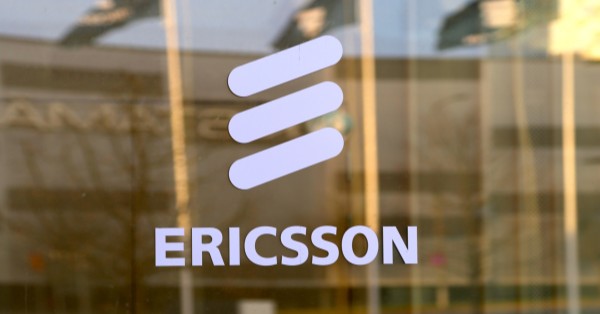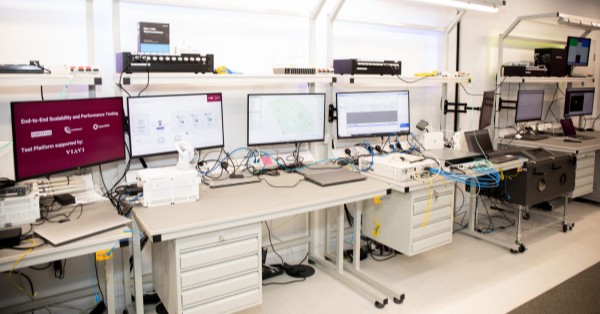Jio Tops Global Data Usage, Reports Strong Q1 Profits
Reliance Jio, India’s leading telecom services provider, has emerged as the world’s largest telecom operator by data usage. This milestone aligns with the company’s impressive quarterly revenue and profit, which have surpassed market expectations. In the June quarter, Jio reported a 10.15% year-on-year revenue growth and a 12% increase in net profit, reflecting its dominant position in the telecom market.
Jio’s Record-Breaking Data Usage: A Global Telecom Leader
Jio’s network handled approximately 45 exabytes of data in the quarter ending June, marking a 33% increase from the previous year. This significant data traffic cements Jio’s position as the world’s largest operator in terms of data usage, even surpassing operators in China.
Anshuman Thakur, head of strategy at Reliance Jio Infocomm Ltd, highlighted, “This makes Jio the world’s largest operator in terms of data traffic compared with all other operators, including those in China.” This achievement underscores Jio’s robust infrastructure and the increasing reliance of Indian consumers on its services for data needs.
Reliance Jio’s Financial Surge: Q1 Revenue and Profit Growth
Reliance Industries Ltd’s telecom arm exceeded market estimates with a 10.15% revenue growth and a 12% increase in net profit for the financial first quarter. The average revenue per user (ARPU) remained steady at ₹181.7 for the third consecutive quarter. However, Jio’s recent 13-25% tariff hike is expected to benefit the company and the industry in the upcoming quarters.
“The benefit of the tariff hike will be seen in the coming quarters,” Thakur noted. “This is going to be good for the overall telecom industry and help build a premier digital society and strengthen the sector.” This strategic move is anticipated to not only boost Jio’s revenue but also stabilize the market by encouraging healthy competition and investment in infrastructure.
Sequentially, Jio’s net profit rose 2% from the March quarter to ₹5,445 crore, and revenue increased by 2% to ₹26,478 crore. These results were announced after market hours on Friday, reflecting the company’s continued growth and market leadership.
Meeting Market Expectations: Jio’s Q1 EBITDA and Revenue Insights
IIFL Securities had predicted Jio’s revenue to increase by around 10.6% and net profit by 10.0% annually. The estimated EBITDA (earnings before interest, taxes, depreciation, and amortization) growth was 11.6% year-on-year, aligning with Jio’s actual EBITDA rise to ₹14,638 crore from ₹13,116 crore during the corresponding quarter last fiscal year.
ARPU remained at ₹181.7, reflecting a better subscriber mix, though this was partially offset by promotional 5G traffic offered on an unlimited basis to subscribers at no additional charge. Analysts anticipate that the impact of the recent tariff hikes will become evident in ARPU figures from the quarter ending in September. Notably, Jio has yet to start charging separately for 5G services, which could further enhance revenue in the future.
Jio’s Revenue Growth vs. Expenses: A Financial Breakdown
The growth in revenue from operations was primarily driven by robust subscriber growth across mobility and homes. Operating margin in the first quarter increased to 26.7% from 26.2% a year earlier and 26.3% in the previous quarter. However, the EBITDA margin fell by 50 basis points year-on-year to 49.7% in the June quarter.
Jio’s total expenses rose 1.84% sequentially to ₹19,266 crore from ₹18,917 crore in Q4FY24, and 9.50% year-on-year from ₹17,594 crore in the same period the previous year. Licensing and spectrum costs increased by 10.4% to ₹2,433 crore from ₹2,204 crore the previous year and by 1.8% from ₹2,389 crore in the previous quarter. These figures highlight the ongoing investments Jio is making to enhance its network capabilities and maintain its competitive edge.
Jio’s Subscriber Surge: Dominating Market Share and Data Traffic
According to an exchange filing, Jio continued to dominate the market, adding 8 million net subscribers in the first quarter of FY25. The monthly churn rate stood at 1.7%. Engagement levels were high, with total data and phone traffic growing by 32.8% and 6.6% year-on-year, respectively. Jio’s subscriber base growth is a testament to its extensive reach and the trust it has built among its users.
Jio is the largest 5G operator outside China, with approximately 130 million users accounting for over 31% of Jio’s wireless data traffic. Jio’s proprietary 5G+4G combination core supports the full 5G data, ensuring seamless connectivity and superior user experience.
Strategic Moves: Jio’s New Plans and Technological Innovations
Jio announced new unlimited plans effective from July 3rd, representing a 13-25% increase over previous plans. The company will continue offering unlimited 5G data on its top plans at no additional cost, while JioBharat/JioPhone subscribers will benefit from current pricing. This strategic pricing adjustment is designed to enhance customer loyalty and attract new users.
Additionally, Jio Platforms launched two new apps: JioSafe, a quantum-secure communication app for calling, messaging, and file sharing, and JioTranslate, an AI-powered multilingual communication tool for translating voice calls, voice messages, and texts. Jio members will have free access to these applications for a year, reinforcing Jio’s commitment to innovation and user satisfaction.
In the June spectrum auctions, Jio acquired more spectrum in the 1800 MHz band in Bihar and West Bengal, bringing its total spectrum footprint to 26,801 MHz (uplink + downlink). This acquisition strengthens Jio’s network capacity and enhances its ability to deliver high-speed internet services across a broader geographic area.
Mukesh Ambani on Jio’s 5G Expansion and Market Leadership
Mukesh Ambani, chairman and managing director of Reliance Industries Ltd, stated that Jio’s True 5G network, which covers about 85% of India’s 5G capacity, continues to attract users. Additionally, the fixed broadband offerings are seeing increased traction among consumers in both homes and enterprises. Reliance Jio’s strategic initiatives and strong performance position it as a key player in the global telecom industry, driving innovation and growth in India’s digital ecosystem.
Jio’s impressive performance and strategic advancements underscore its leadership in the telecom sector. As it continues to expand its 5G network and enhance its service offerings, Jio is well-positioned to shape the future of digital connectivity in India and beyond.



























